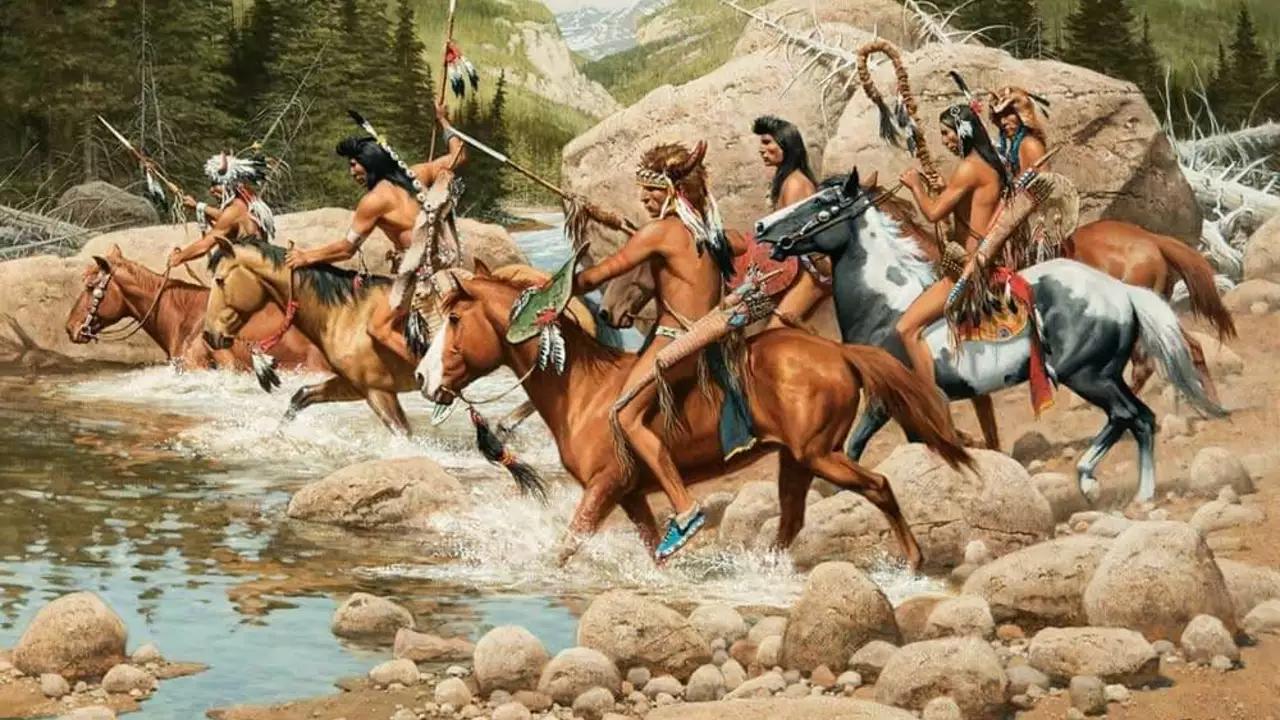
Understanding the Native American Indian Warriors
As we delve into the history of Native American Indian warriors, it's crucial to understand that these were not a homogeneous group. They were diverse tribes with different cultures, languages, and ways of warfare. Each had its unique strengths and techniques, making them formidable opponents in combat. They were known for their bravery, strategic thinking, and profound understanding of their environment, which they used to their advantage in warfare.
The Art of Guerrilla Warfare
One of the most notable aspects of Native American warfare was their use of guerrilla tactics. These warriors were not fond of open battles. Instead, they preferred ambushes, surprise attacks, and hit-and-run tactics. They used the terrain and their intimate knowledge of it to conceal their movements and launch sudden attacks on their enemies. This aspect of their warfare was highly effective and often caught their adversaries off guard.
Impressive Weaponry and Skill
Despite not having access to advanced weaponry, the Native American warriors were highly skilled and innovative in their use of the available resources. They were masters of the bow and arrow, using these weapons with deadly accuracy. Other weapons included spears, tomahawks, and knives. In addition to this, they had incredible endurance and physical strength, which made them formidable in hand-to-hand combat.
Role of Horses in Warfare
With the introduction of horses by the Spanish in the 16th century, Native American warfare underwent a significant transformation. They quickly adapted to these animals and became skilled horsemen. Horses provided them with increased mobility, allowing them to launch swift attacks and retreat just as quickly. In many tribes, a warrior's prestige was often linked to his skill as a horseman.
Strategic Use of the Environment
Native American warriors were adept at using their environment to their advantage. They used the terrain for concealment, camouflage, and surprise attacks. They knew their lands intimately and used this knowledge to outsmart their enemies. Whether it was using the cover of forests for ambushes or pushing enemies into natural traps, their understanding of the environment played a crucial role in their warfare.
Warrior Societies and Their Roles
In many tribes, warrior societies played a significant role. These were groups of men who were specifically trained for warfare. They were responsible for defending the tribe, leading war parties, and conducting raids. They often had a strict code of conduct and were highly respected within the tribe. Membership in these societies was usually based on bravery and skill in combat.
The Tradition of Counting Coup
One unique aspect of Native American warfare was the tradition of counting coup. This was a practice where warriors earned prestige by touching an enemy without causing injury or death and then escaping unharmed. This showed their bravery and skill, as it often involved getting dangerously close to their enemies.
The Role of Women in Warfare
While men were typically the warriors in Native American tribes, women also played crucial roles in warfare. They were responsible for supporting the warriors, often serving as healers, providing food and supplies, and even fighting when necessary. In some tribes, women who showed exceptional bravery and skill could earn the status of a warrior.
Warfare and Spirituality
Finally, it's important to note that warfare for Native American warriors was not just a physical battle, but also a spiritual one. Warriors often sought the guidance and protection of the spiritual world before going into battle. They engaged in rituals and ceremonies to prepare themselves mentally and spiritually. This aspect of their warfare showed their deep connection with the spiritual world and their belief in its influence on their success in battle.